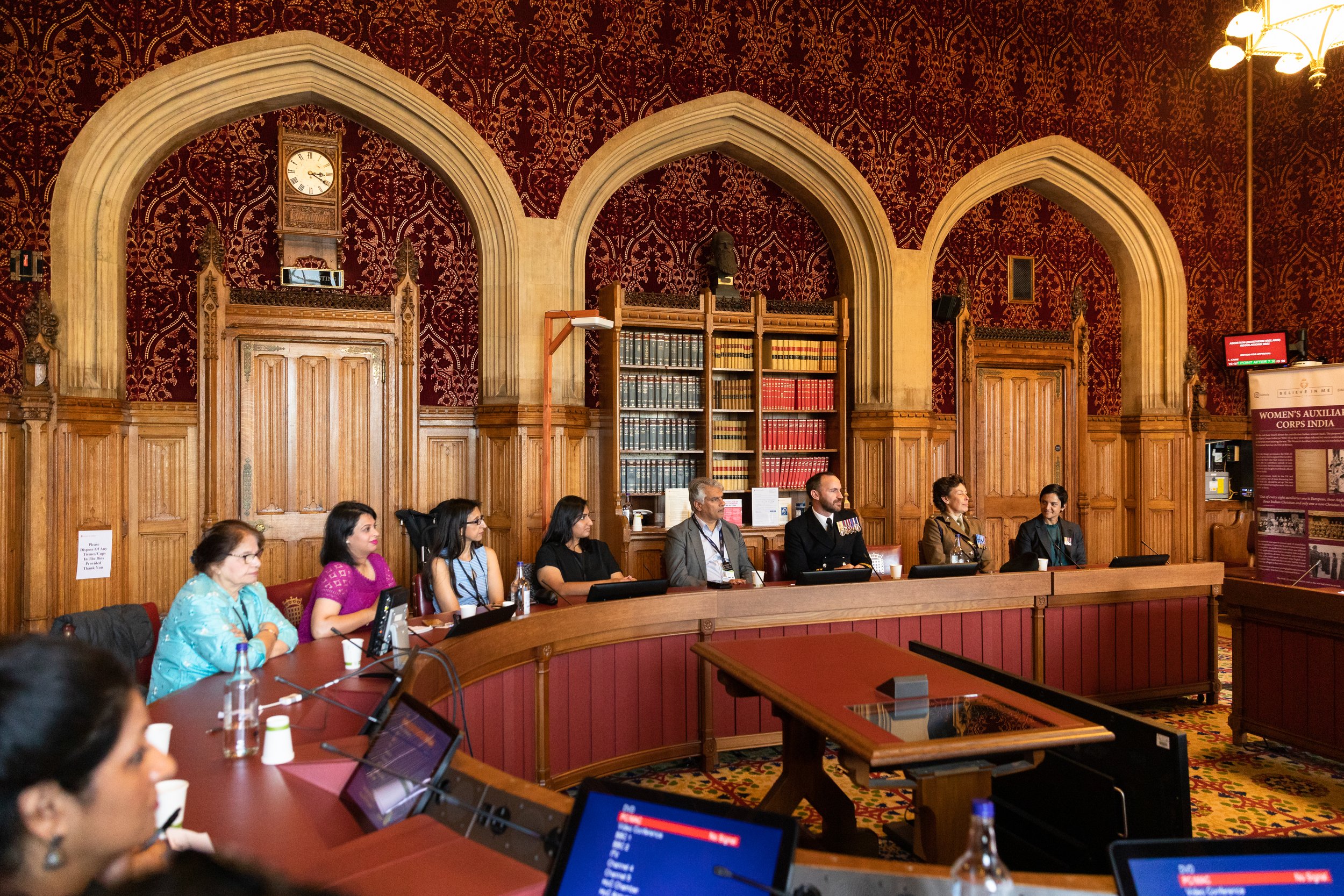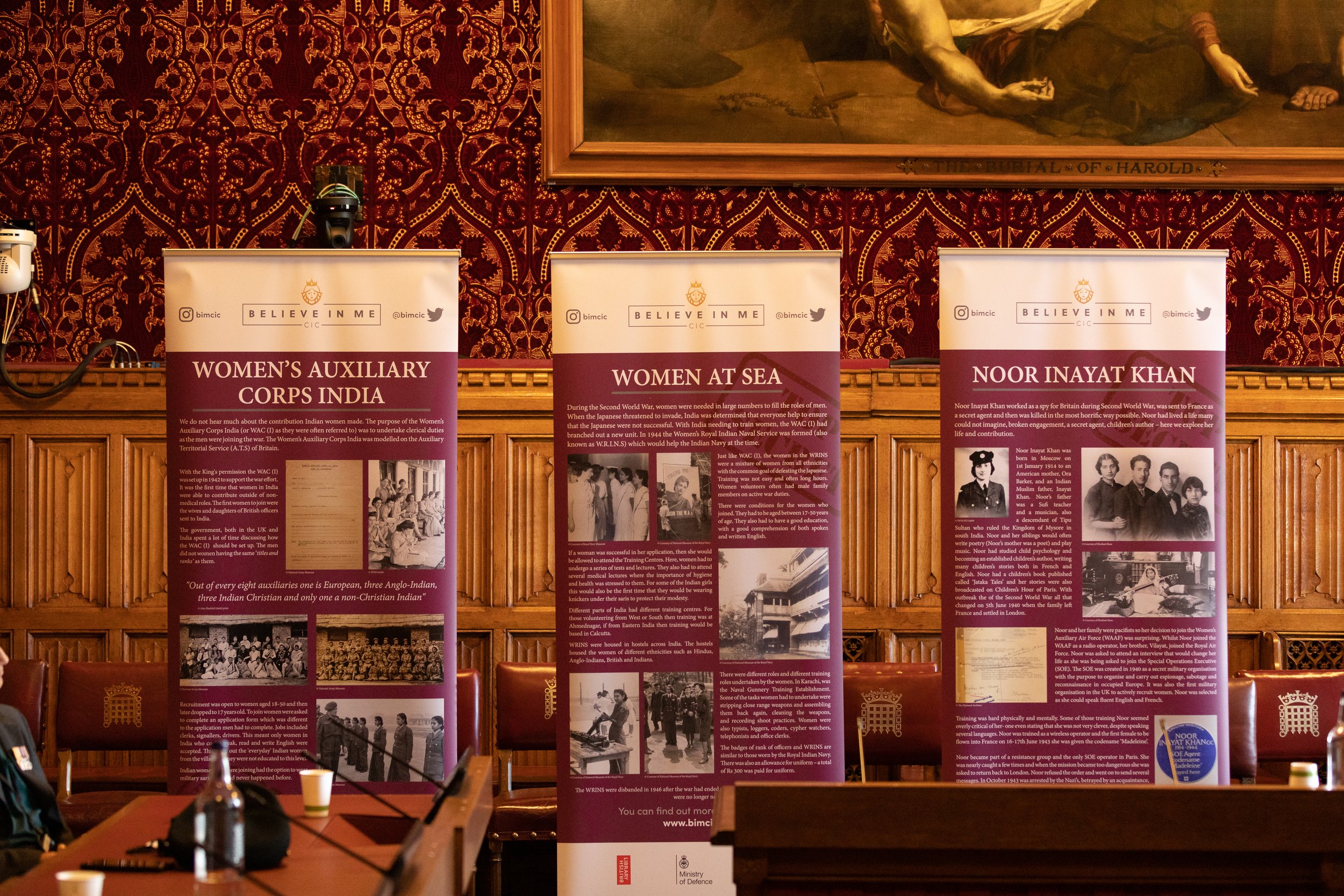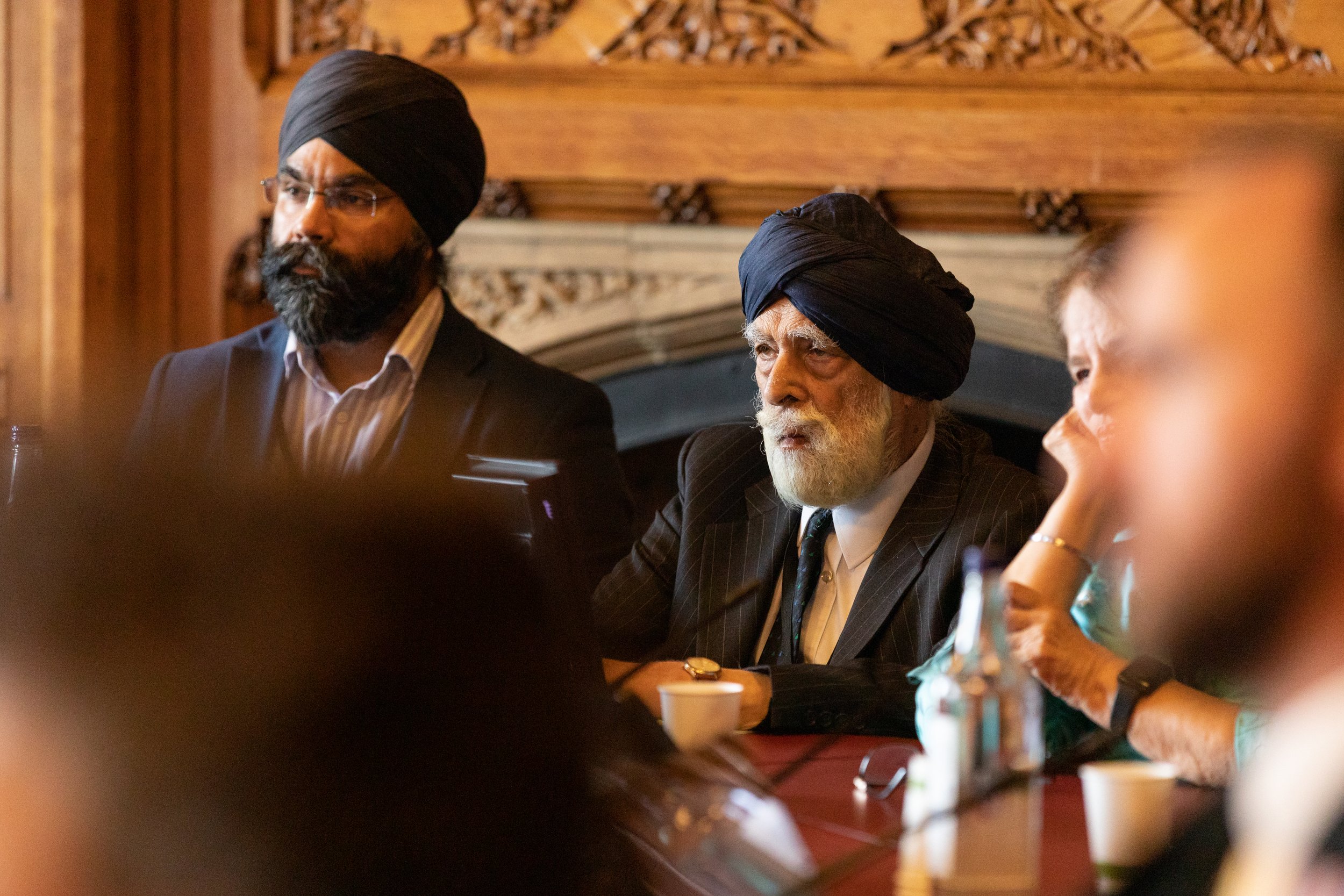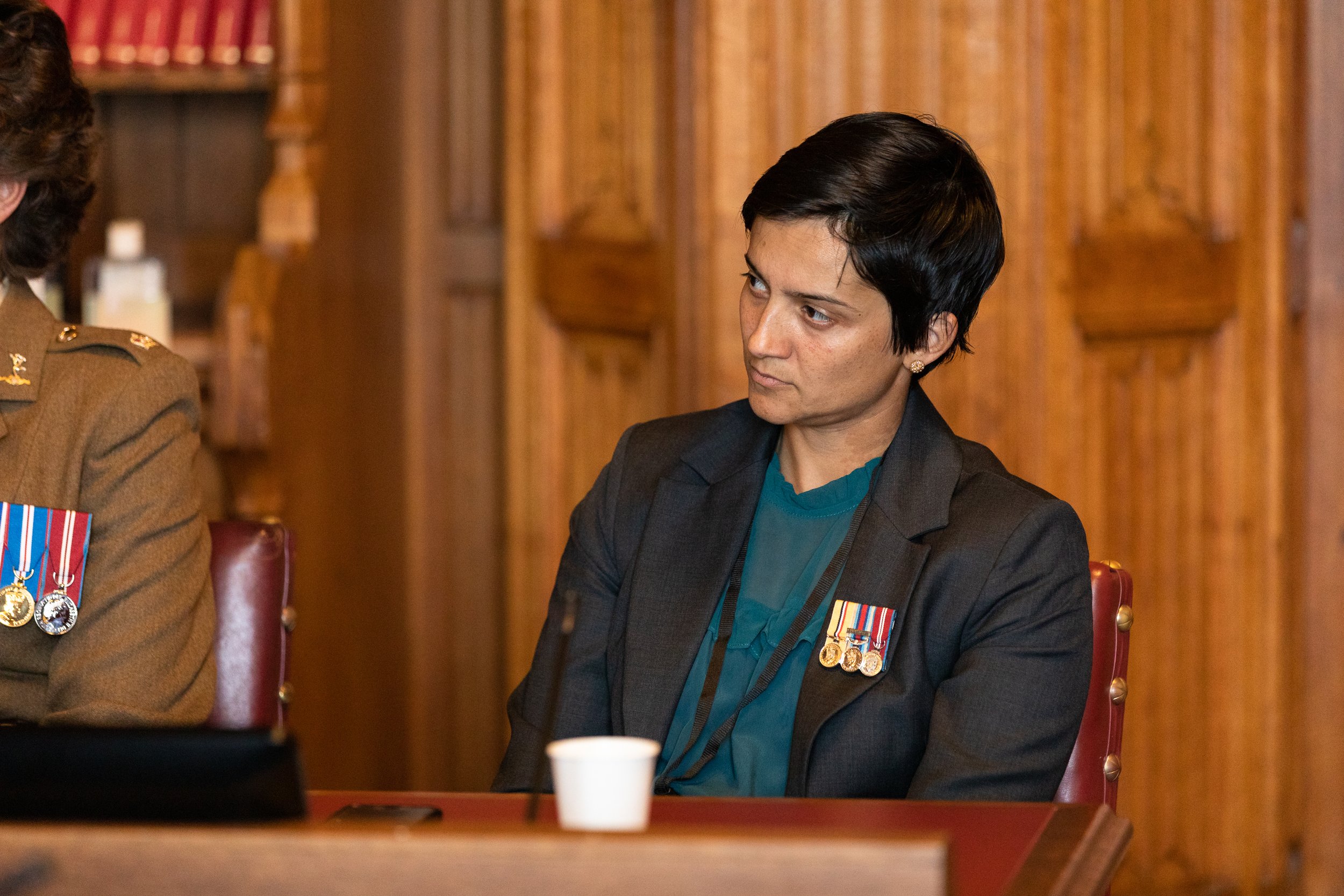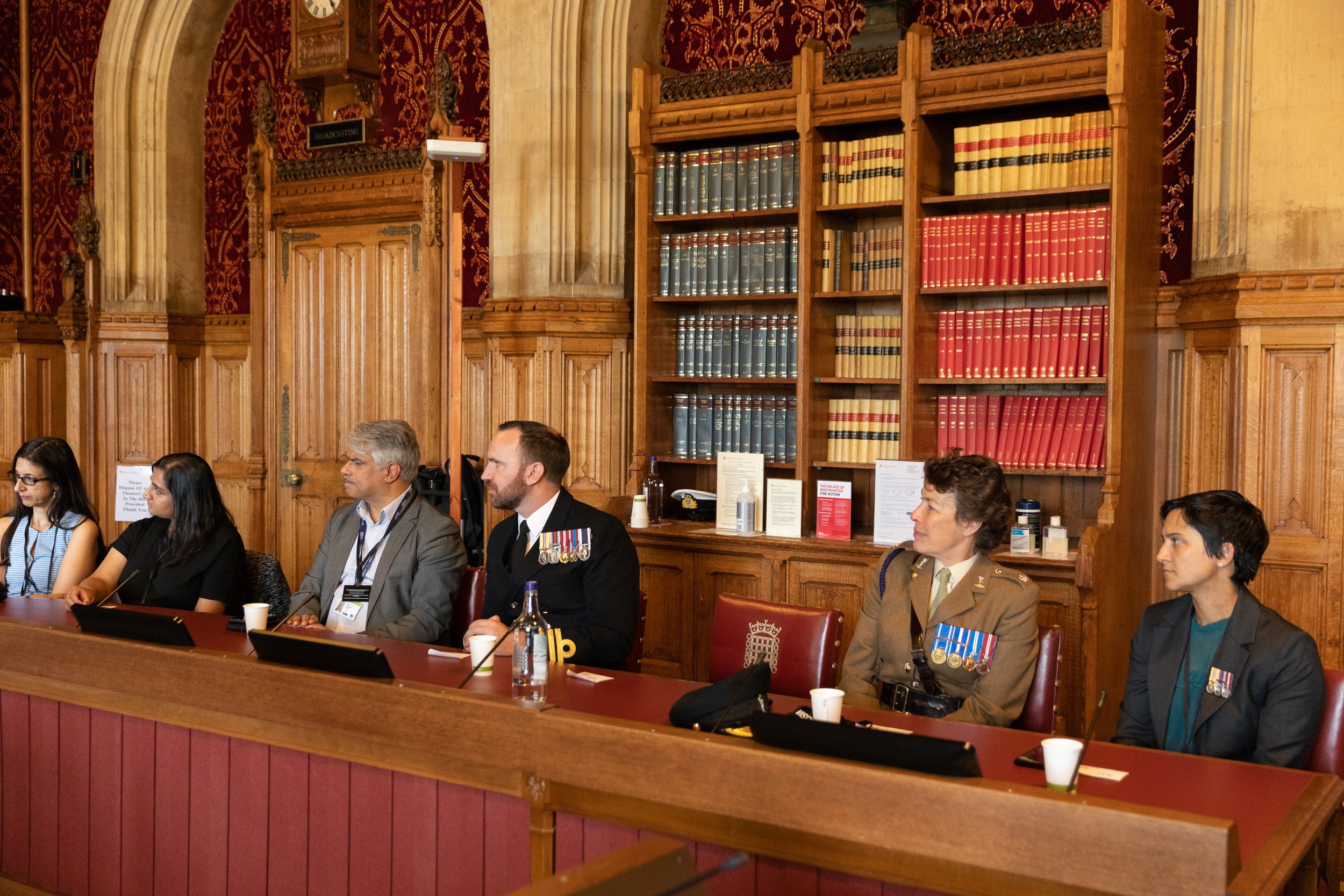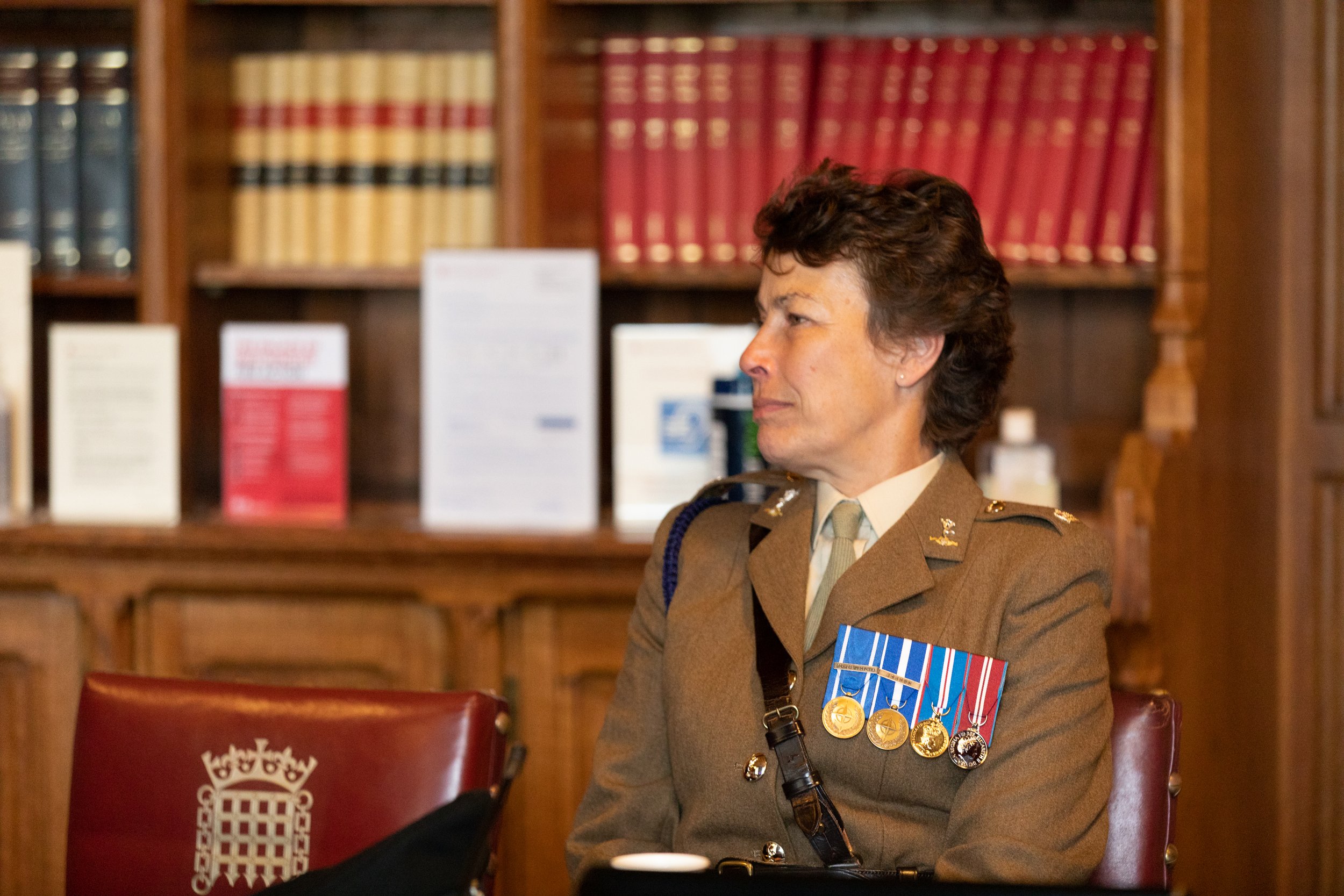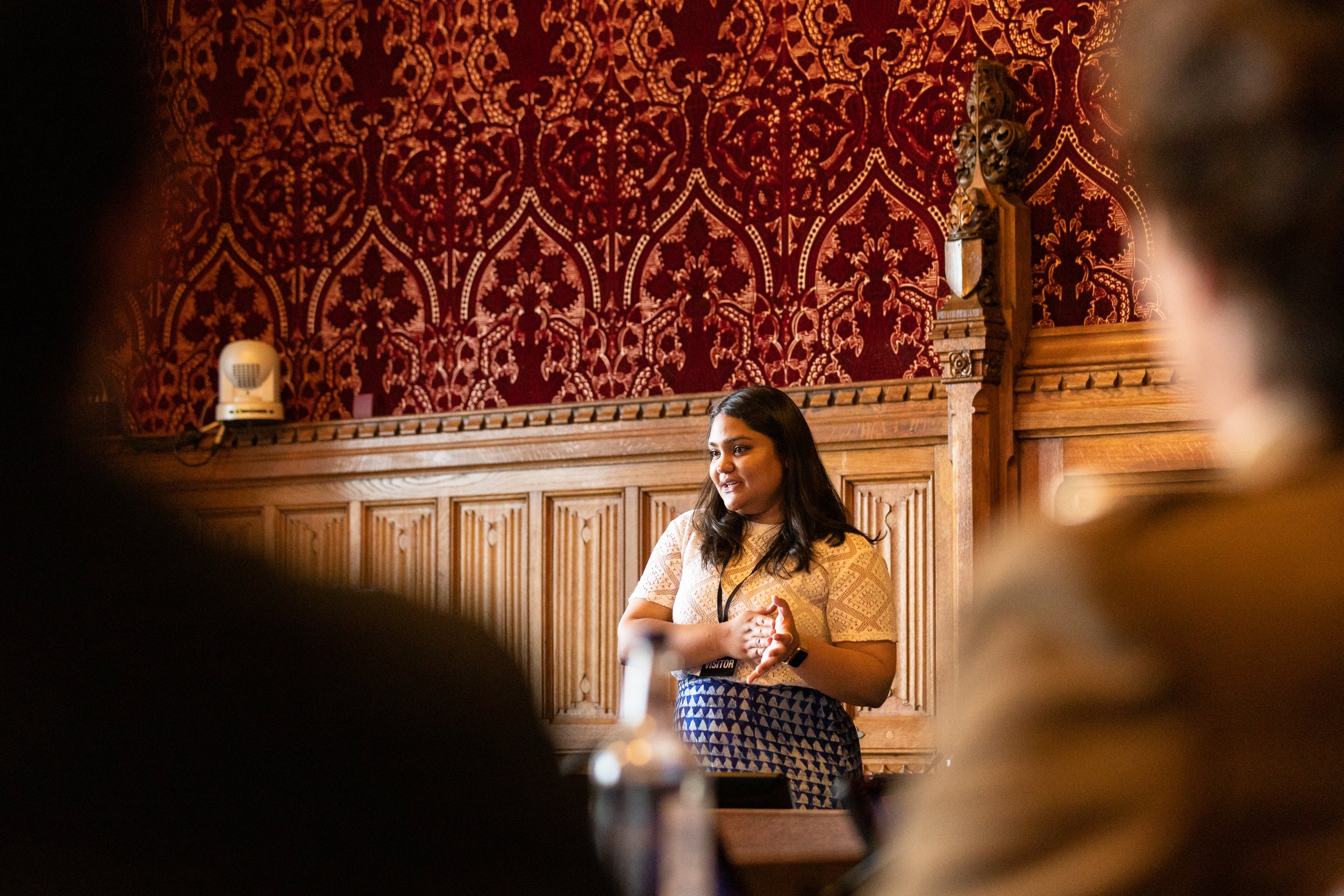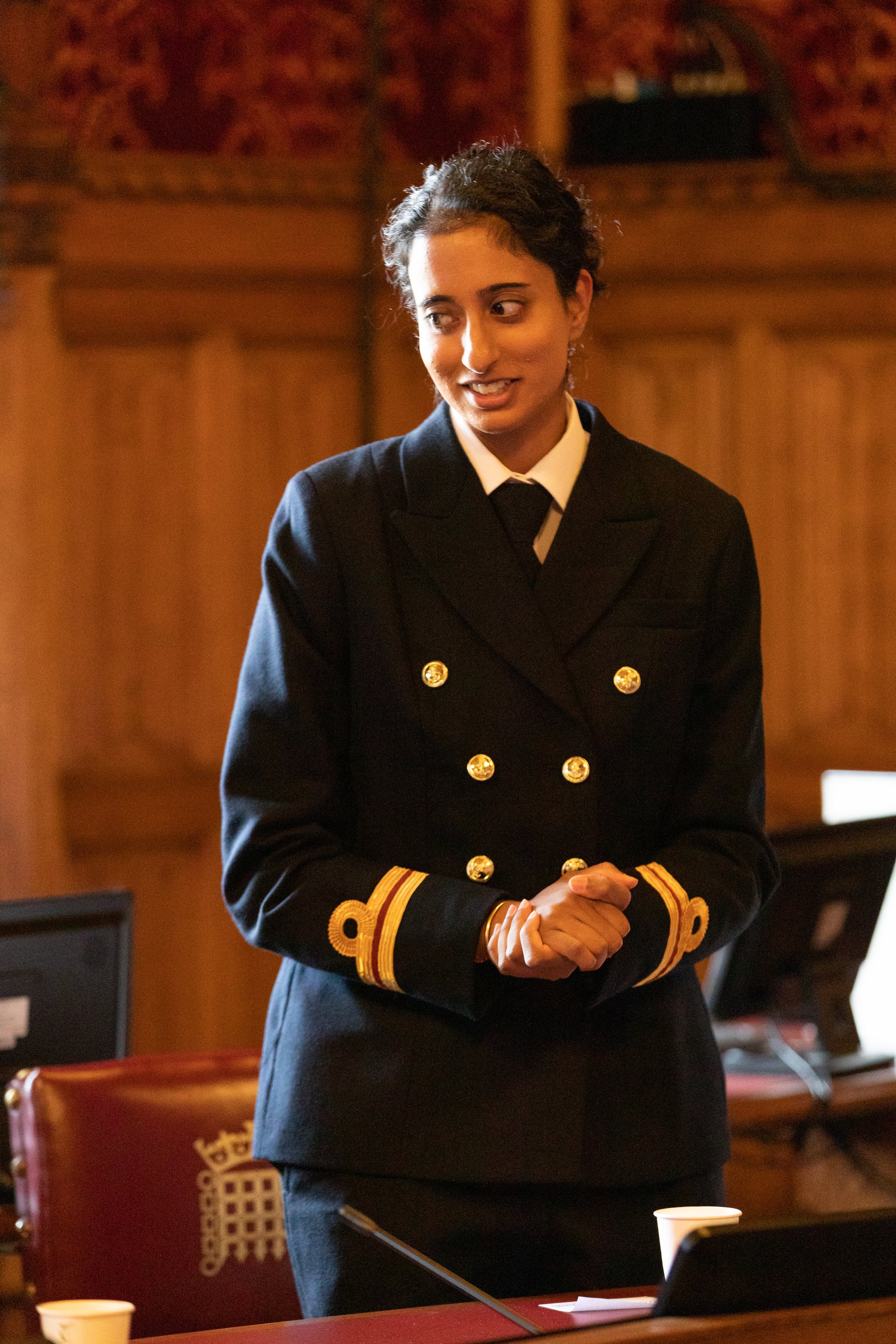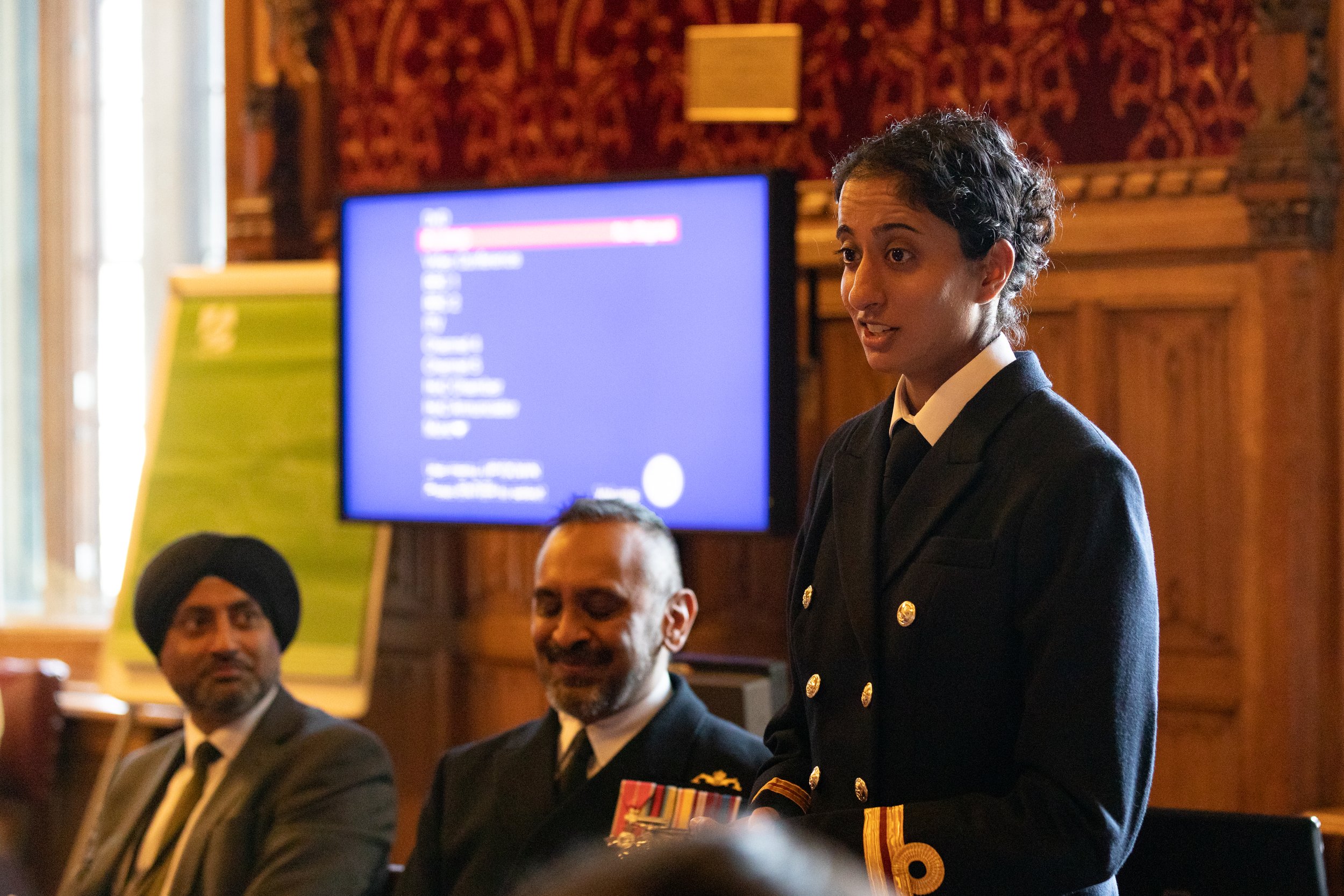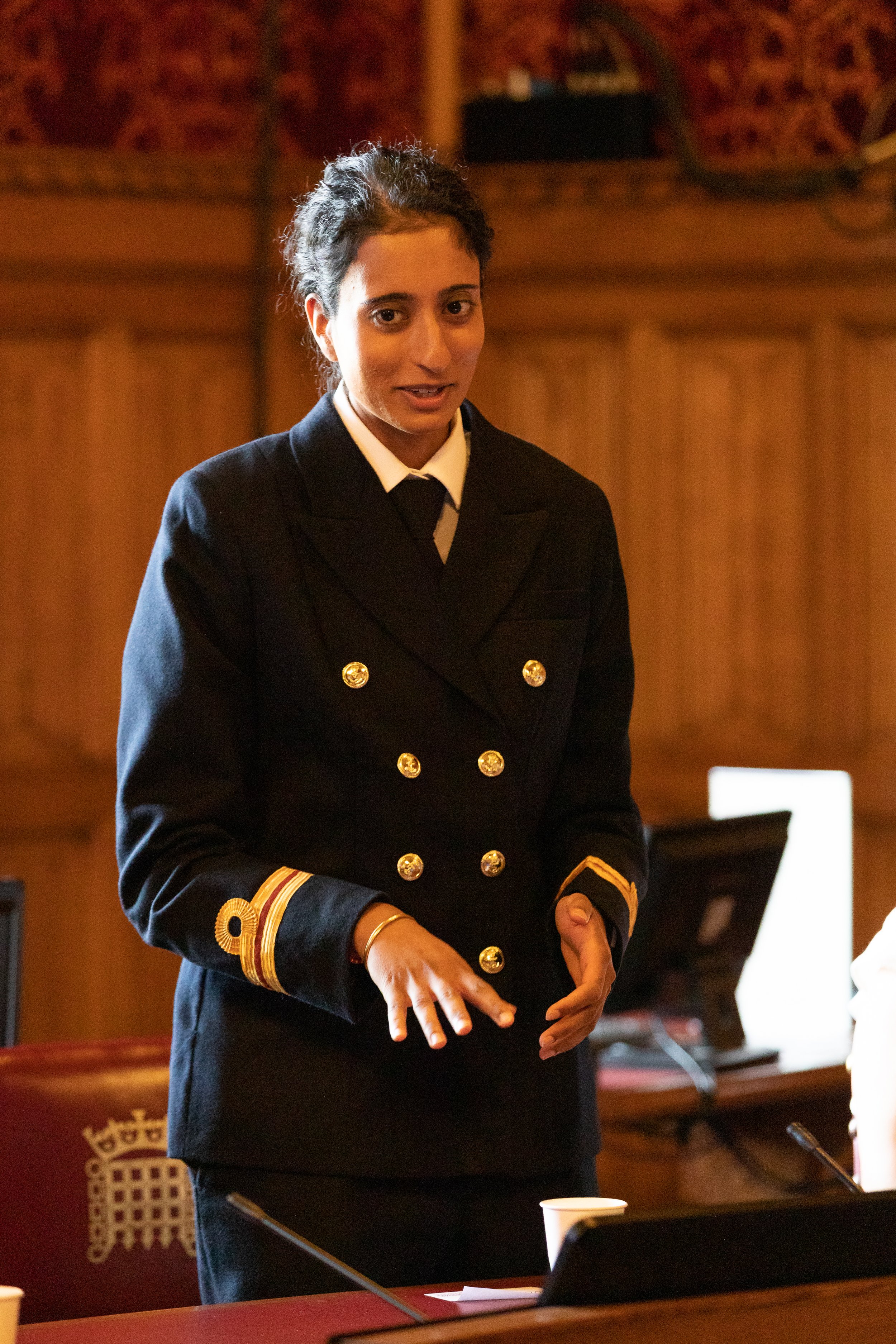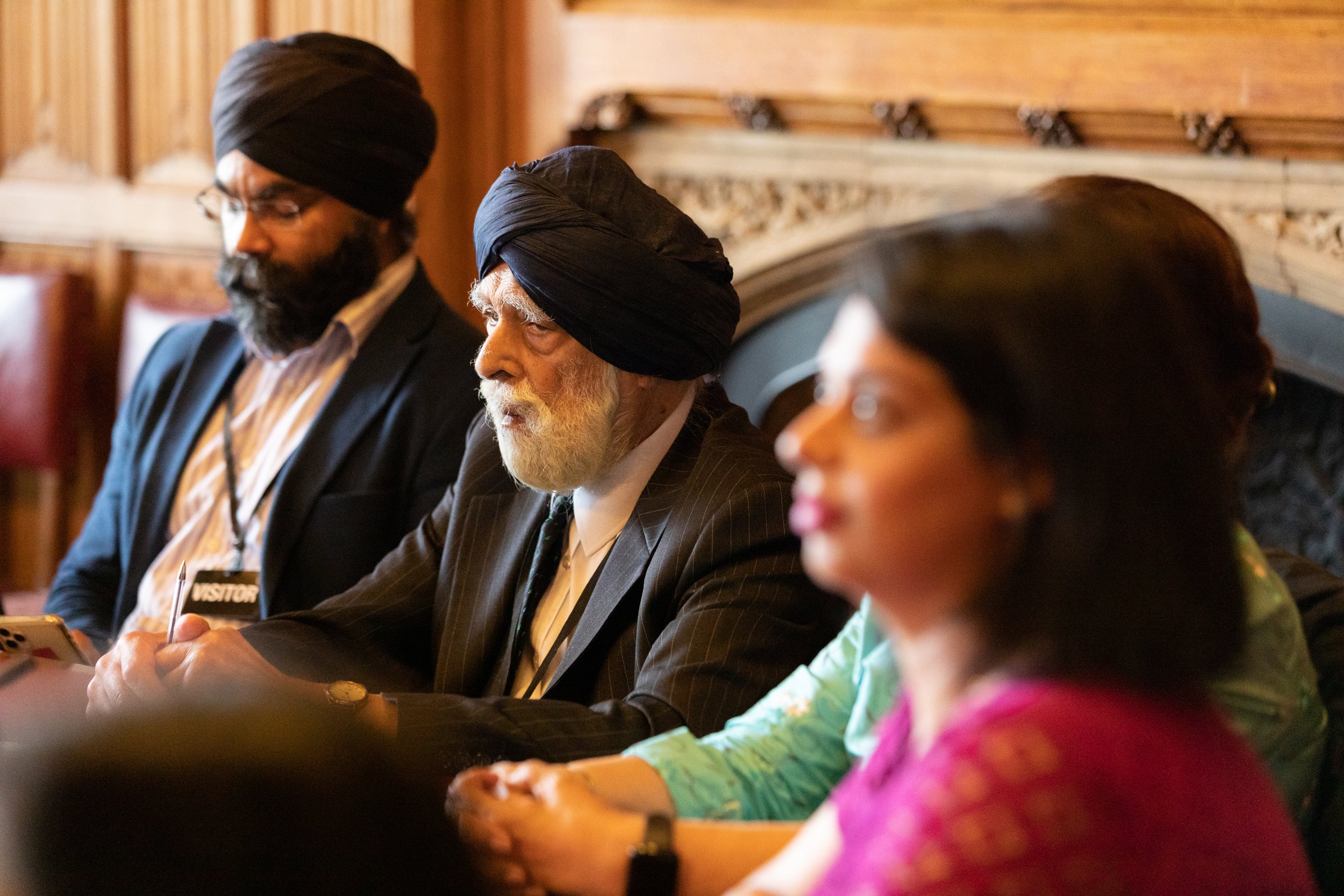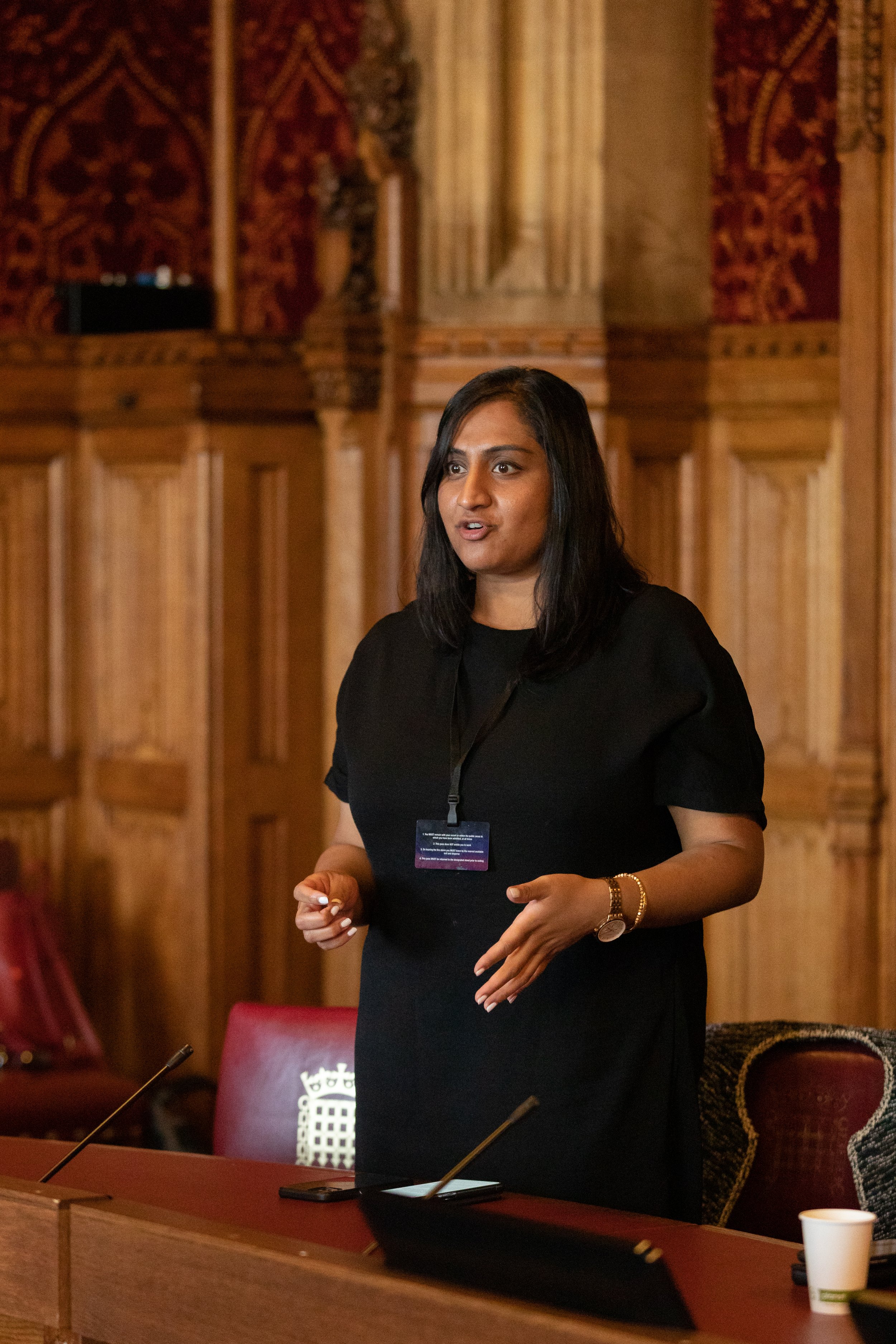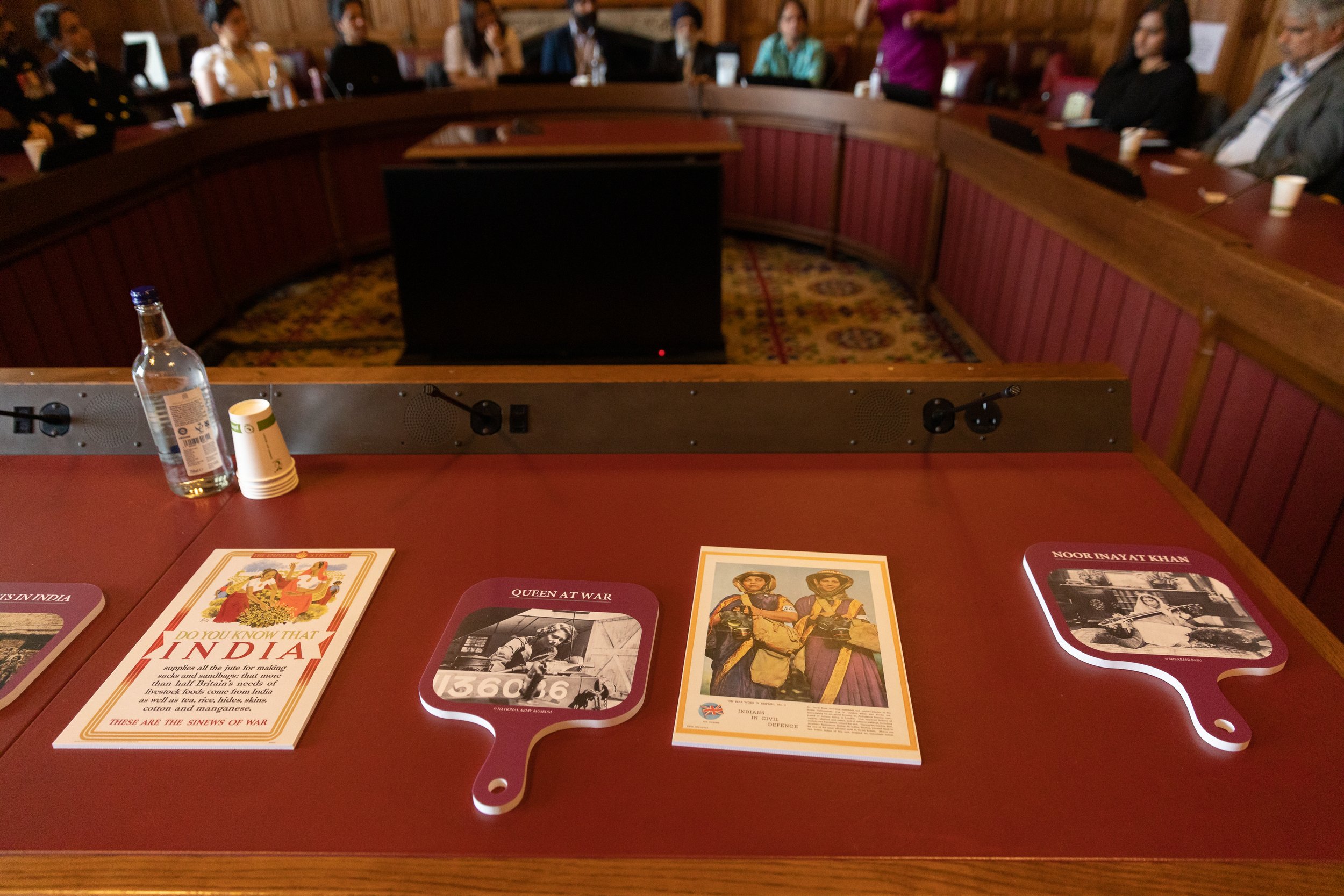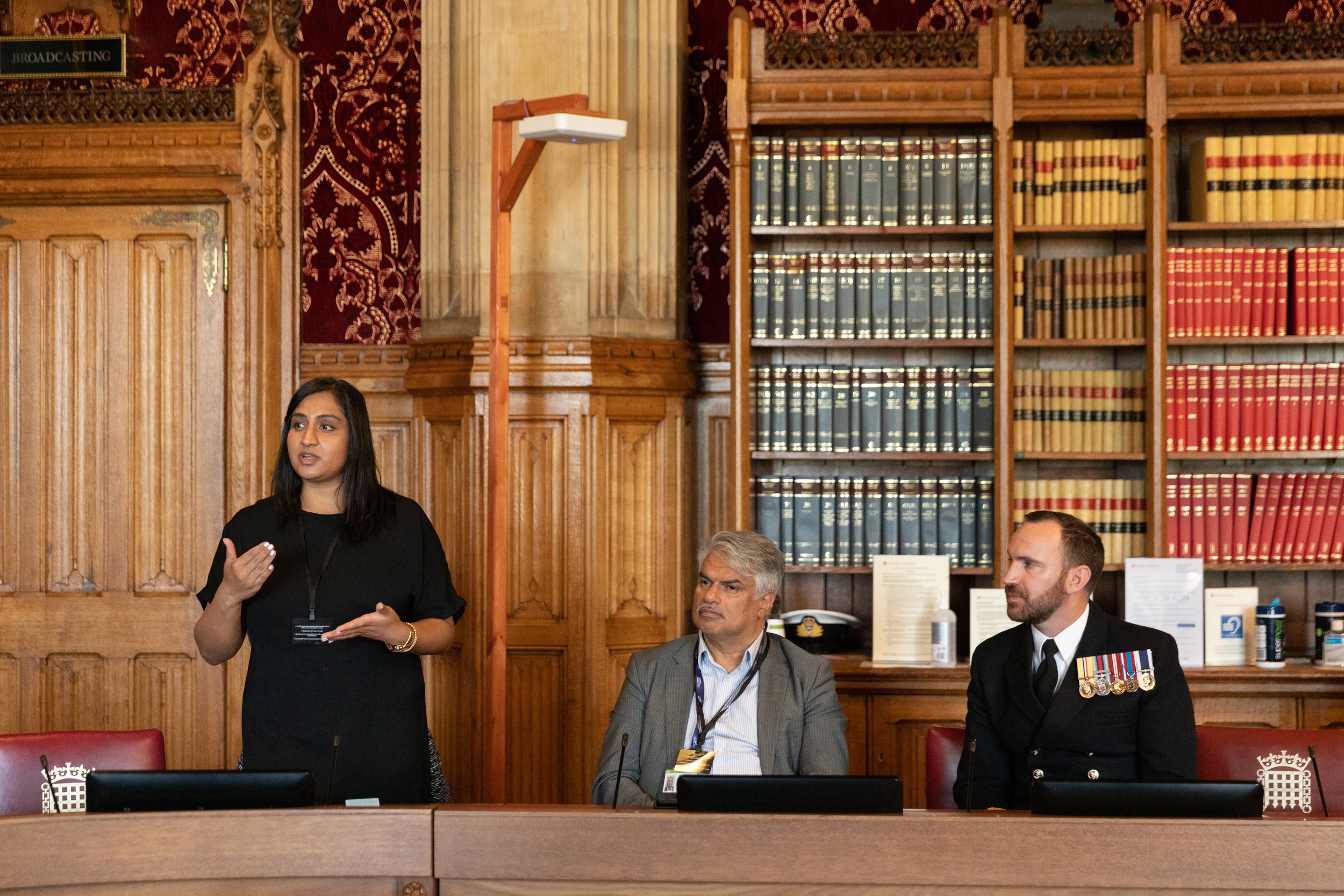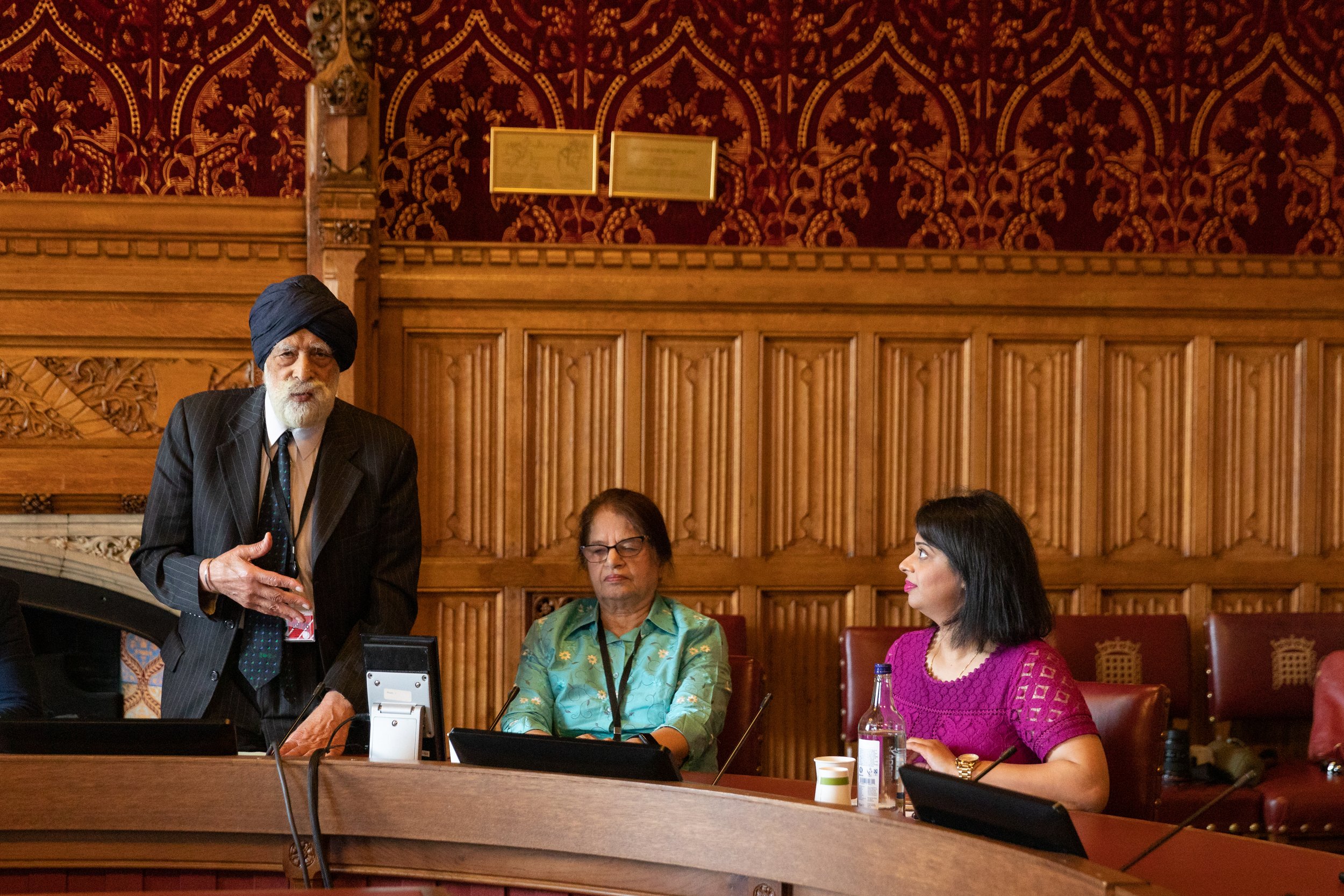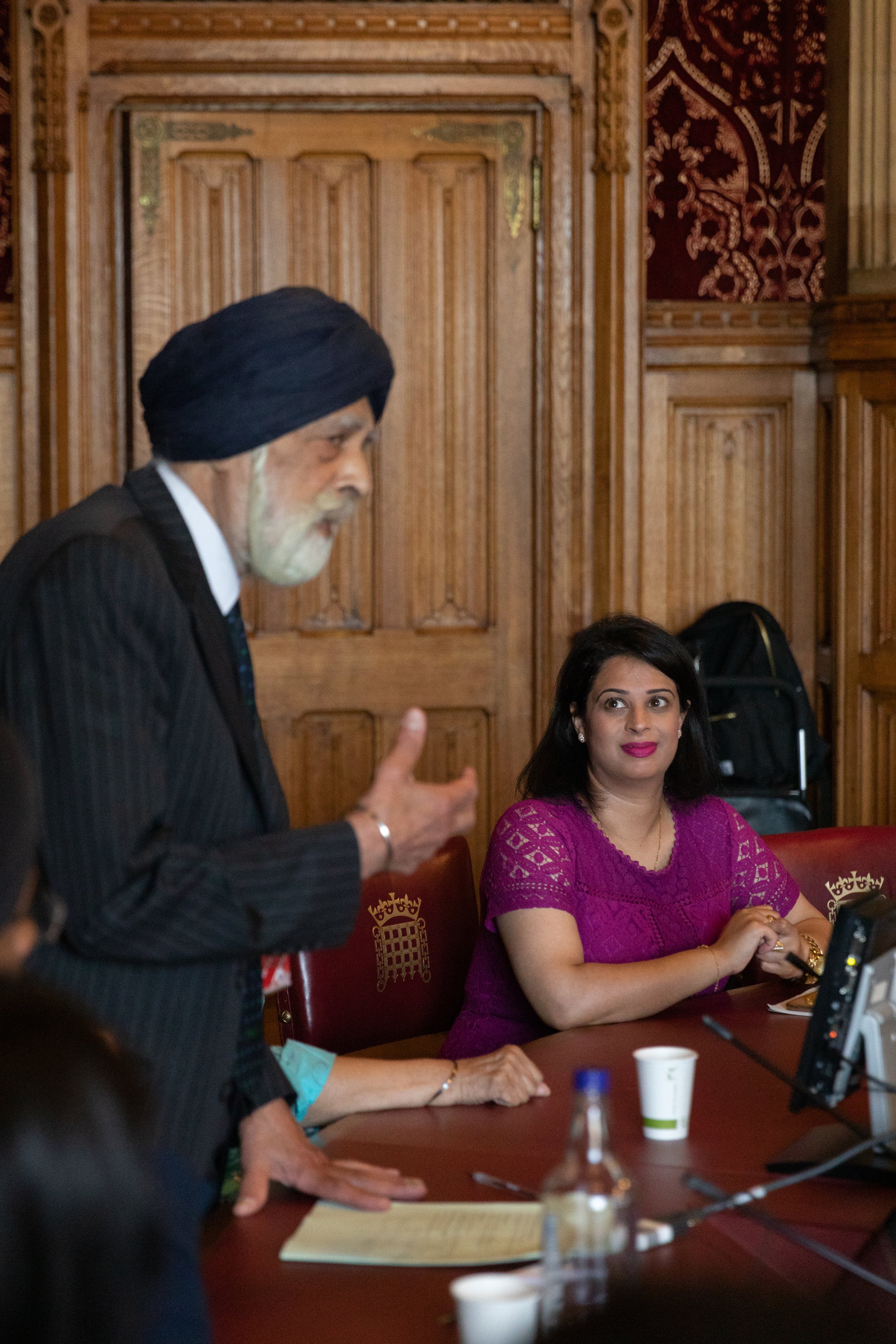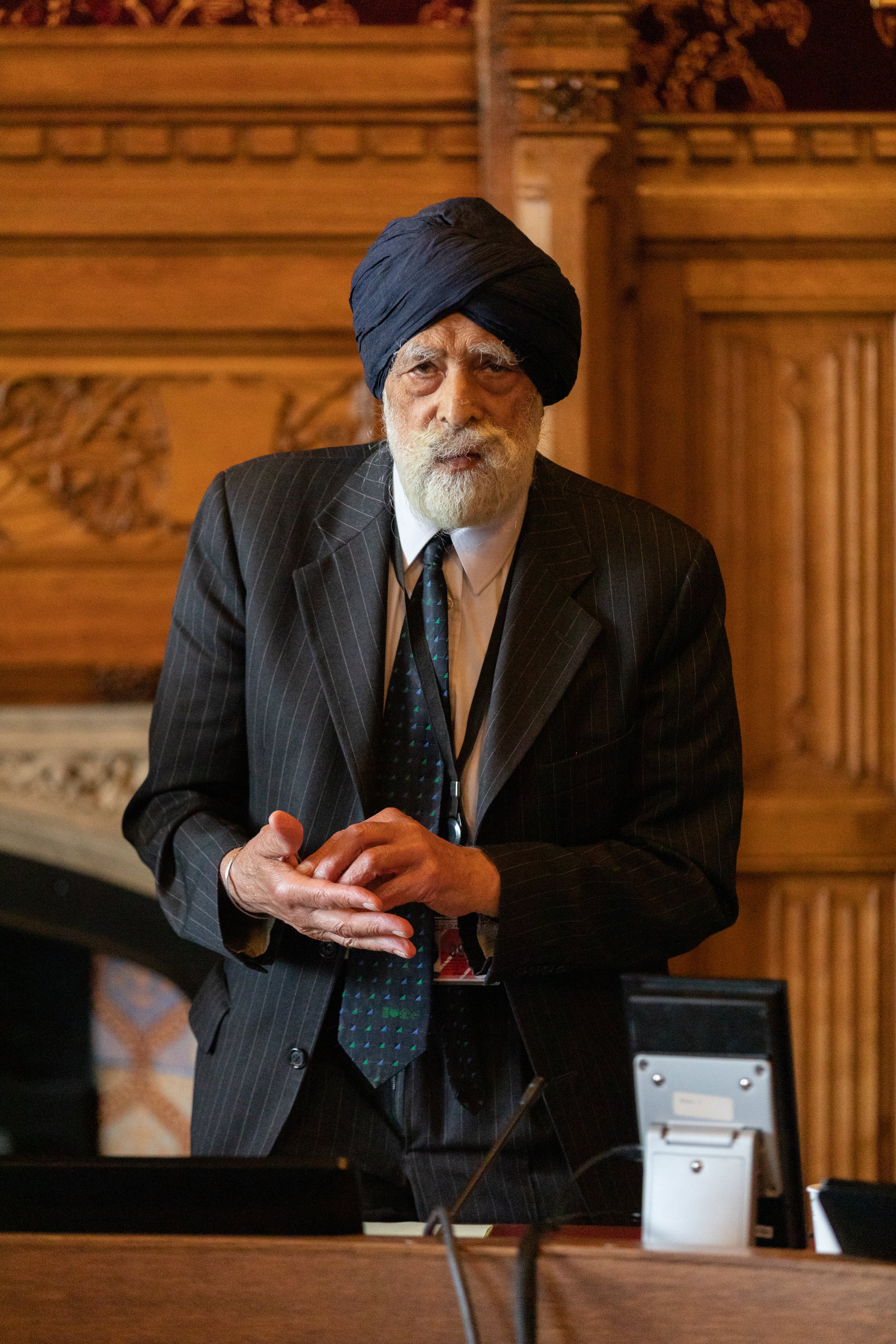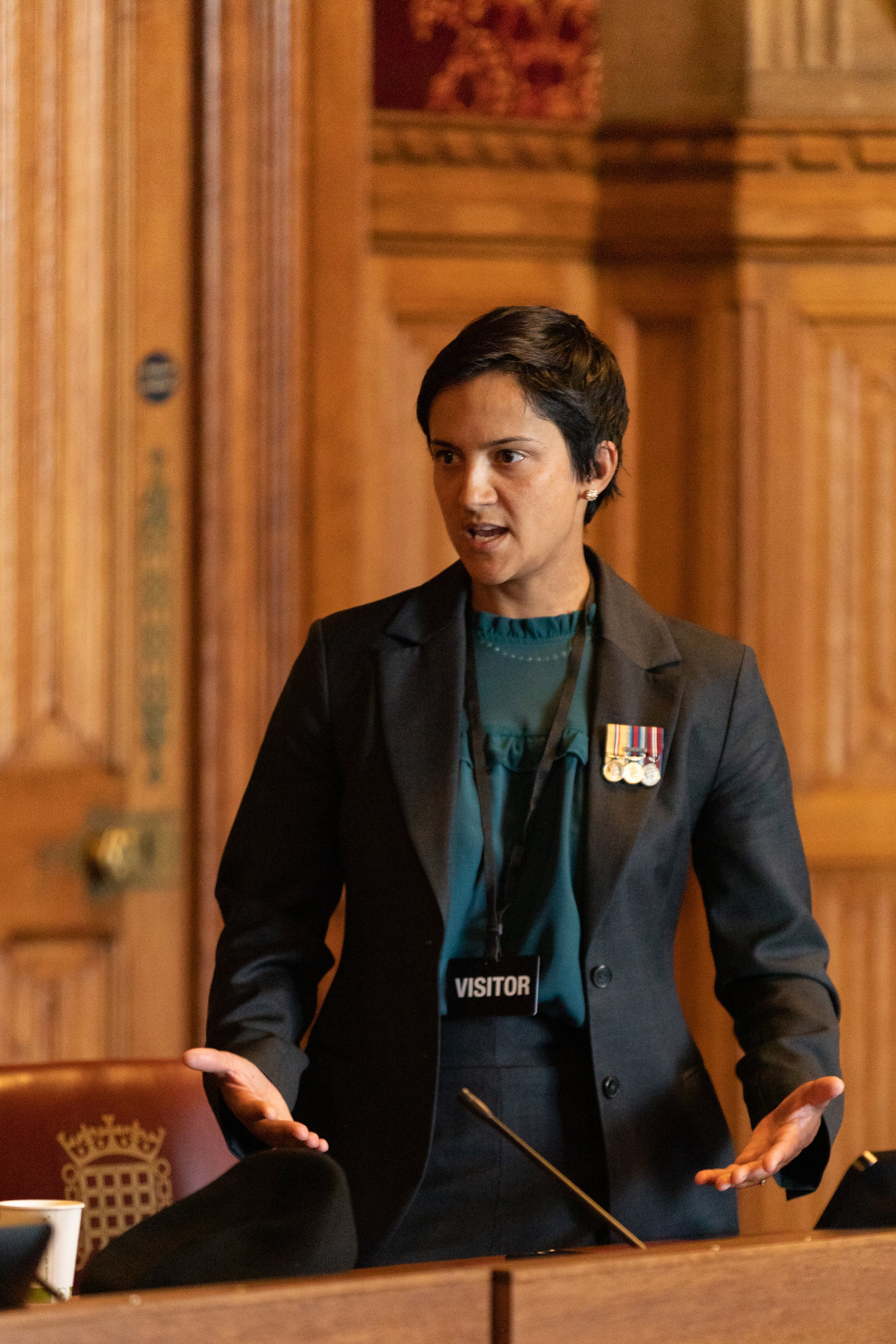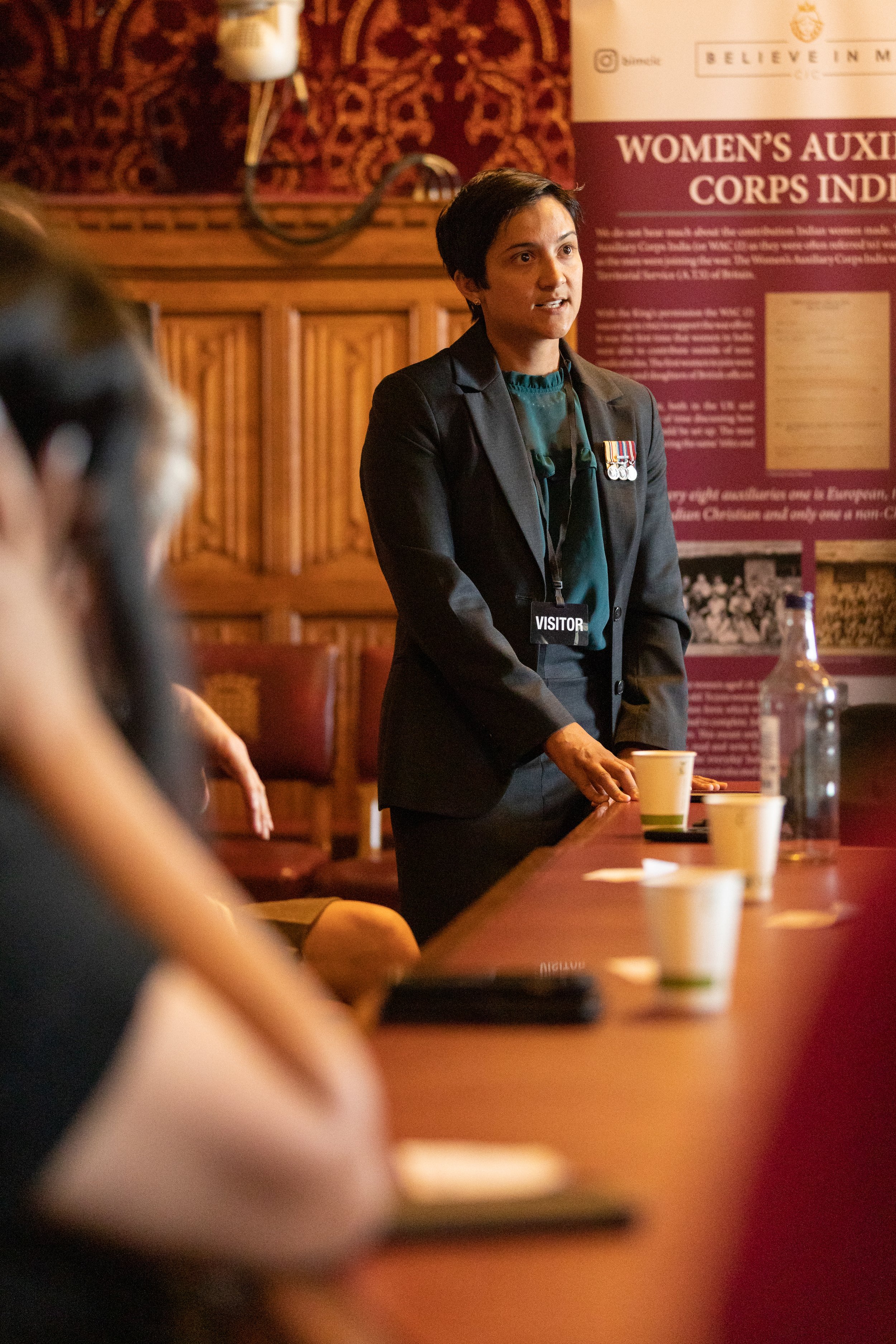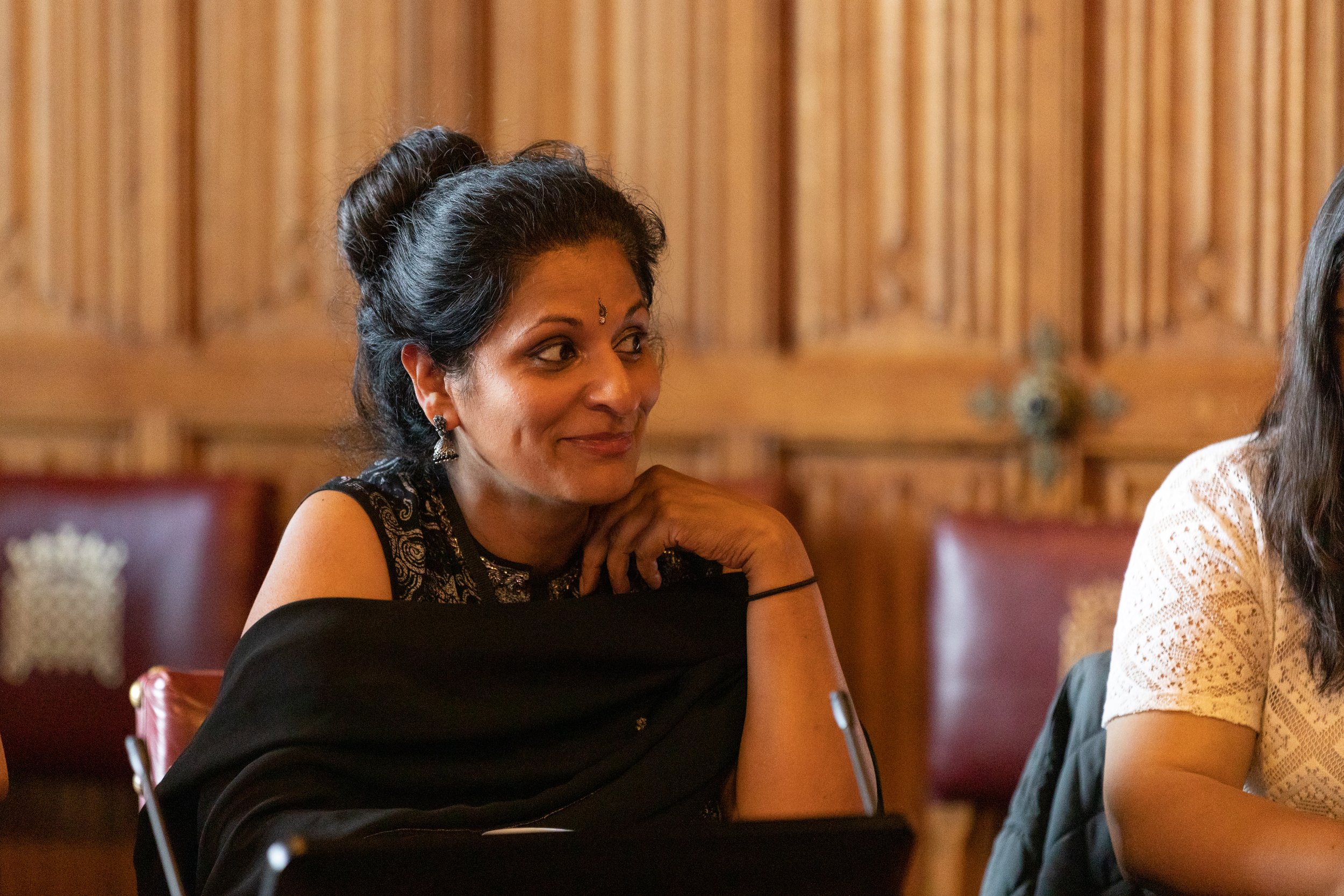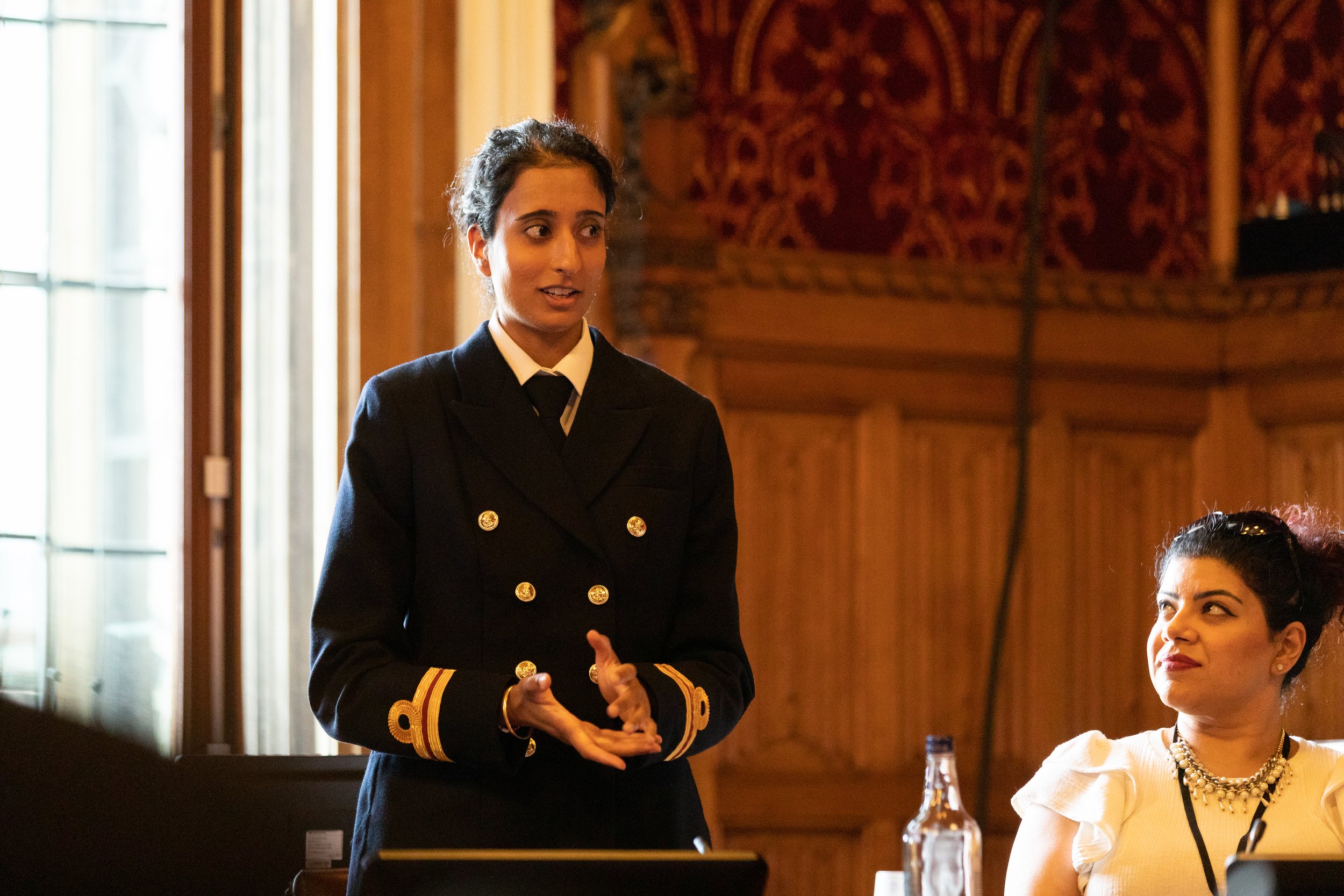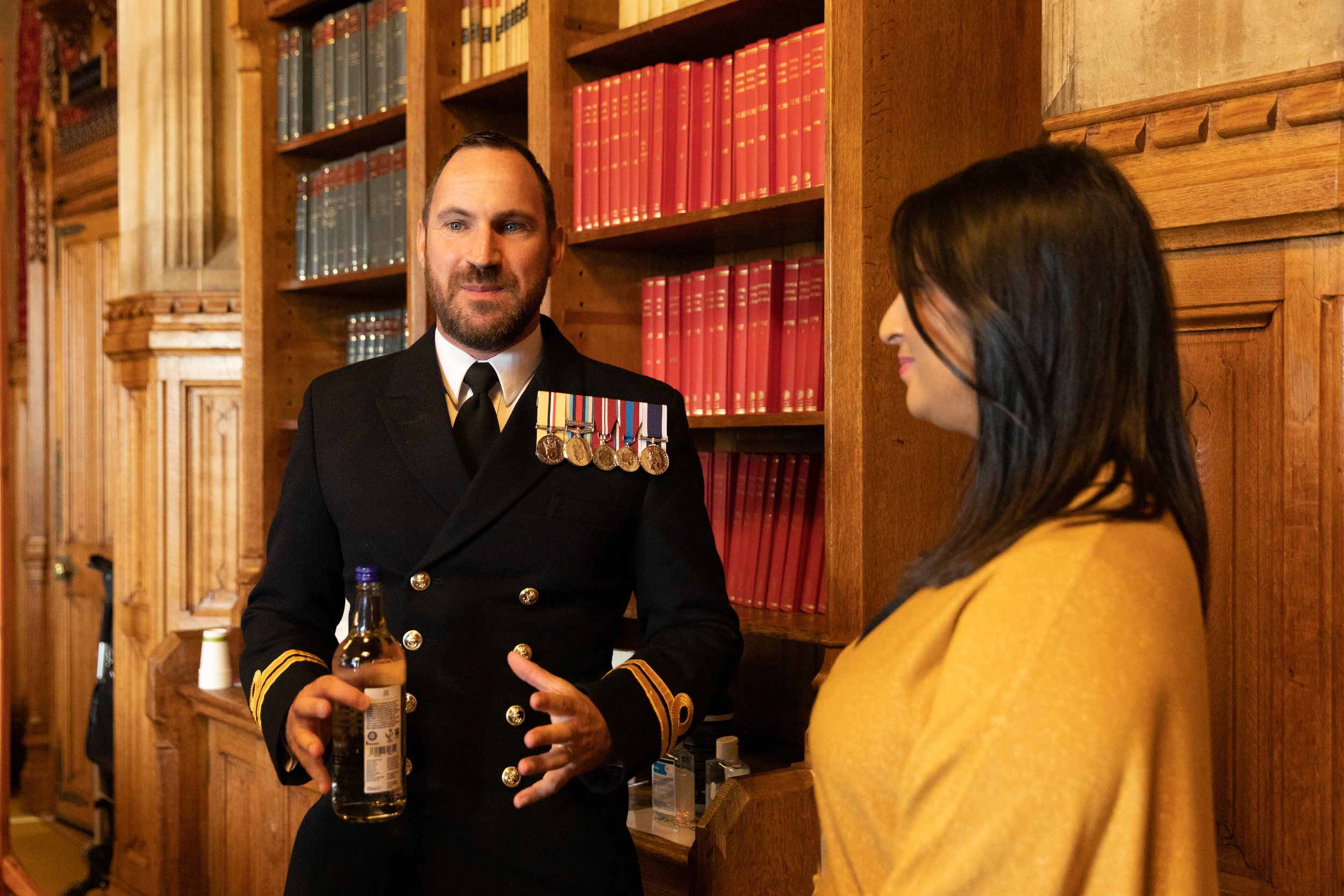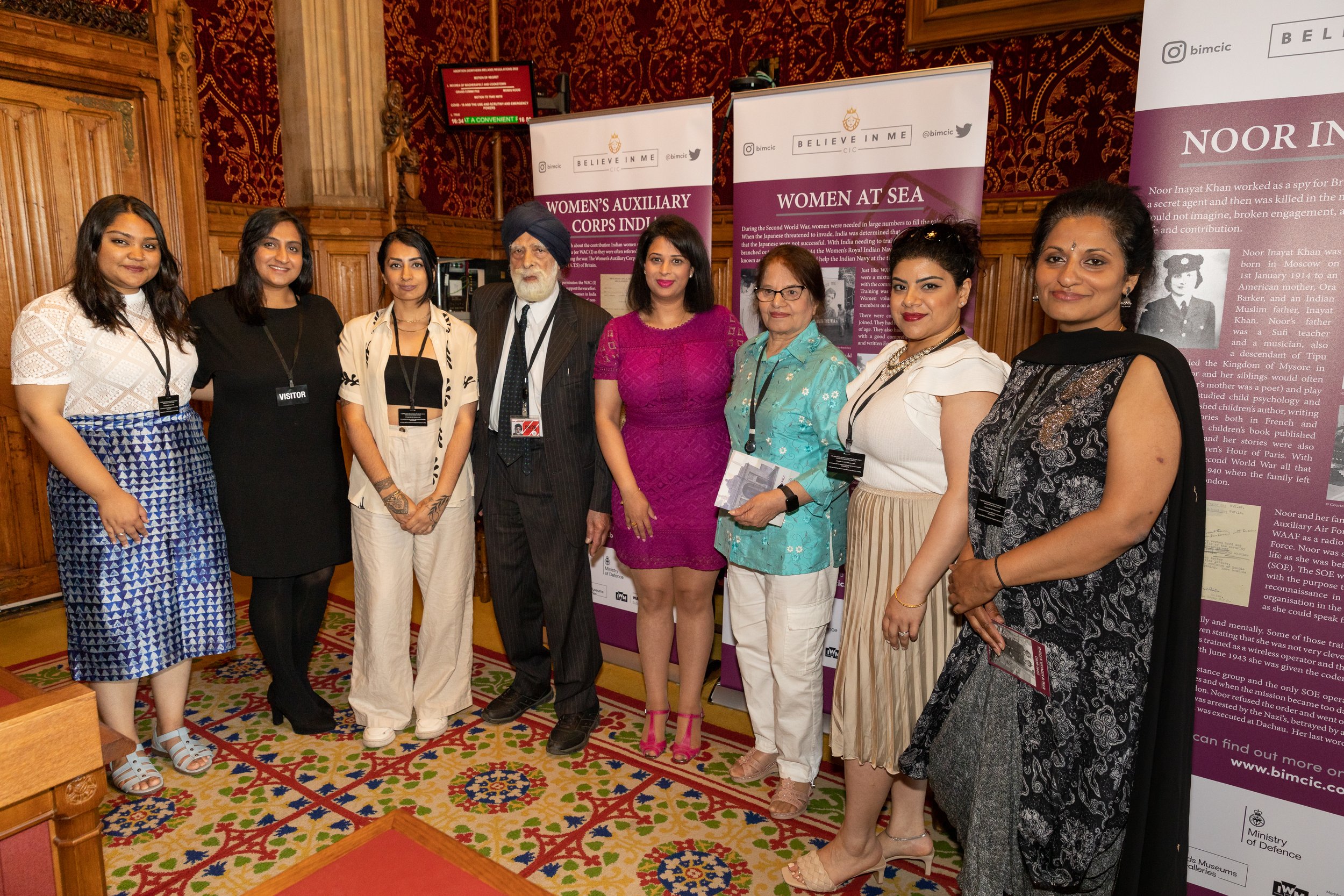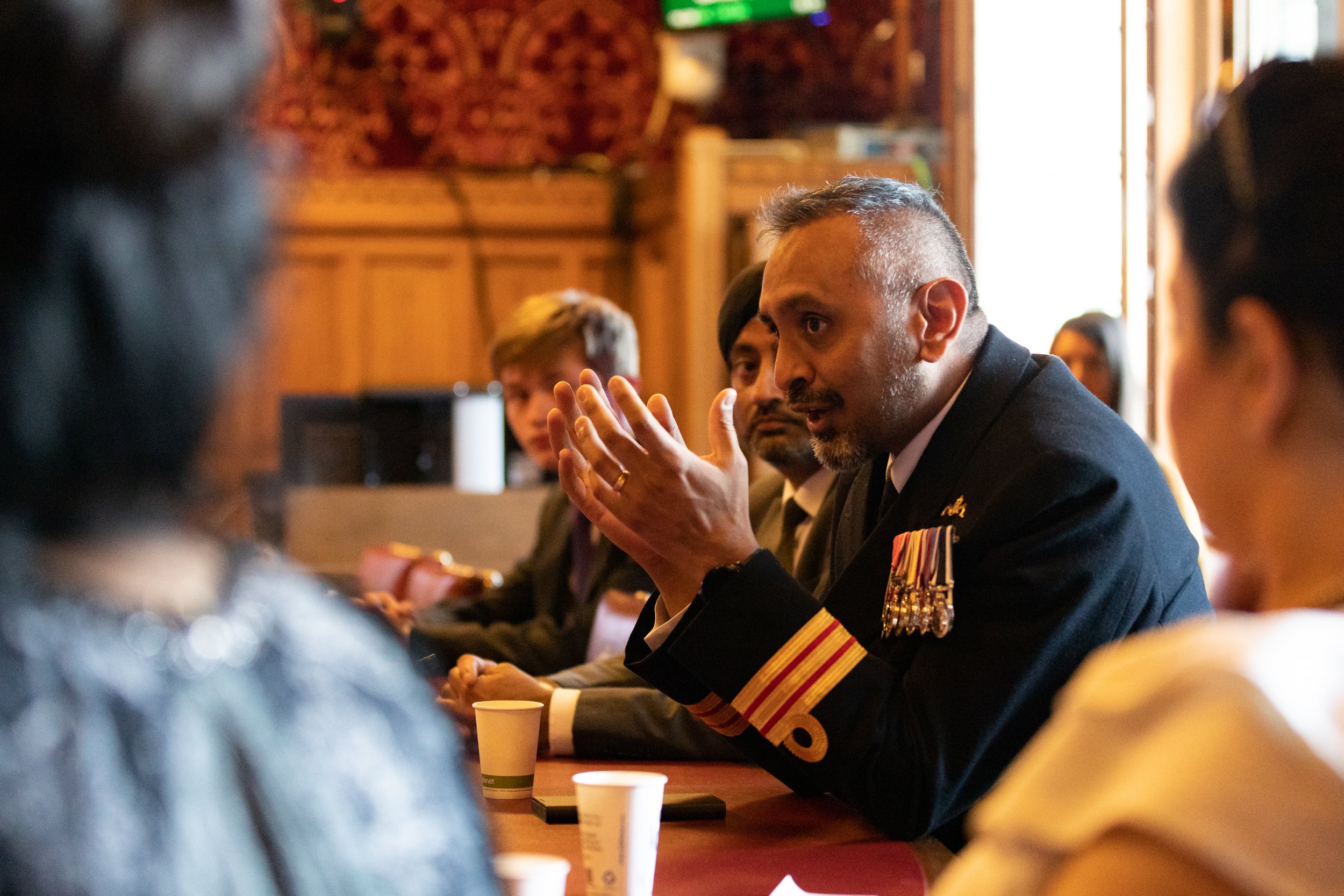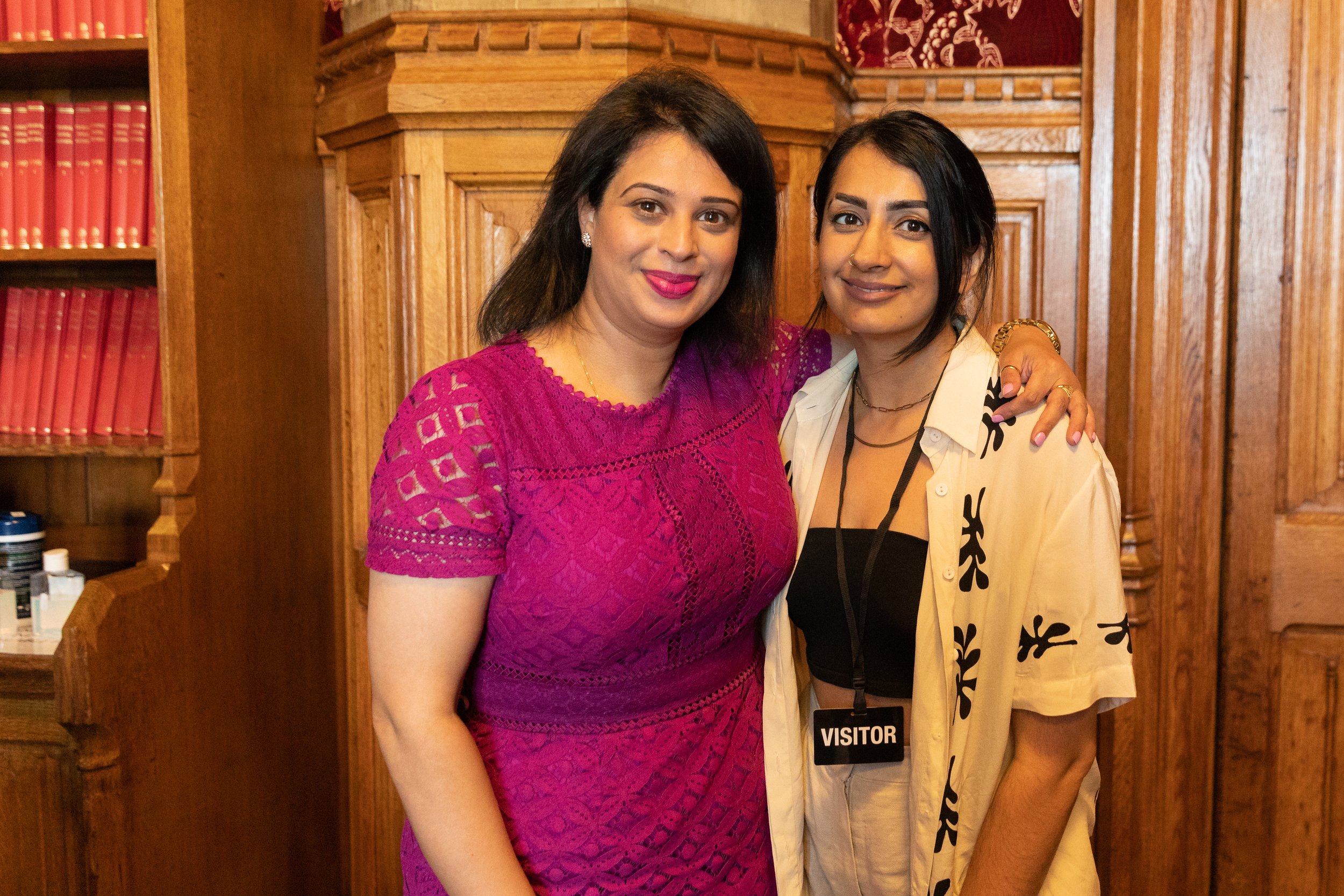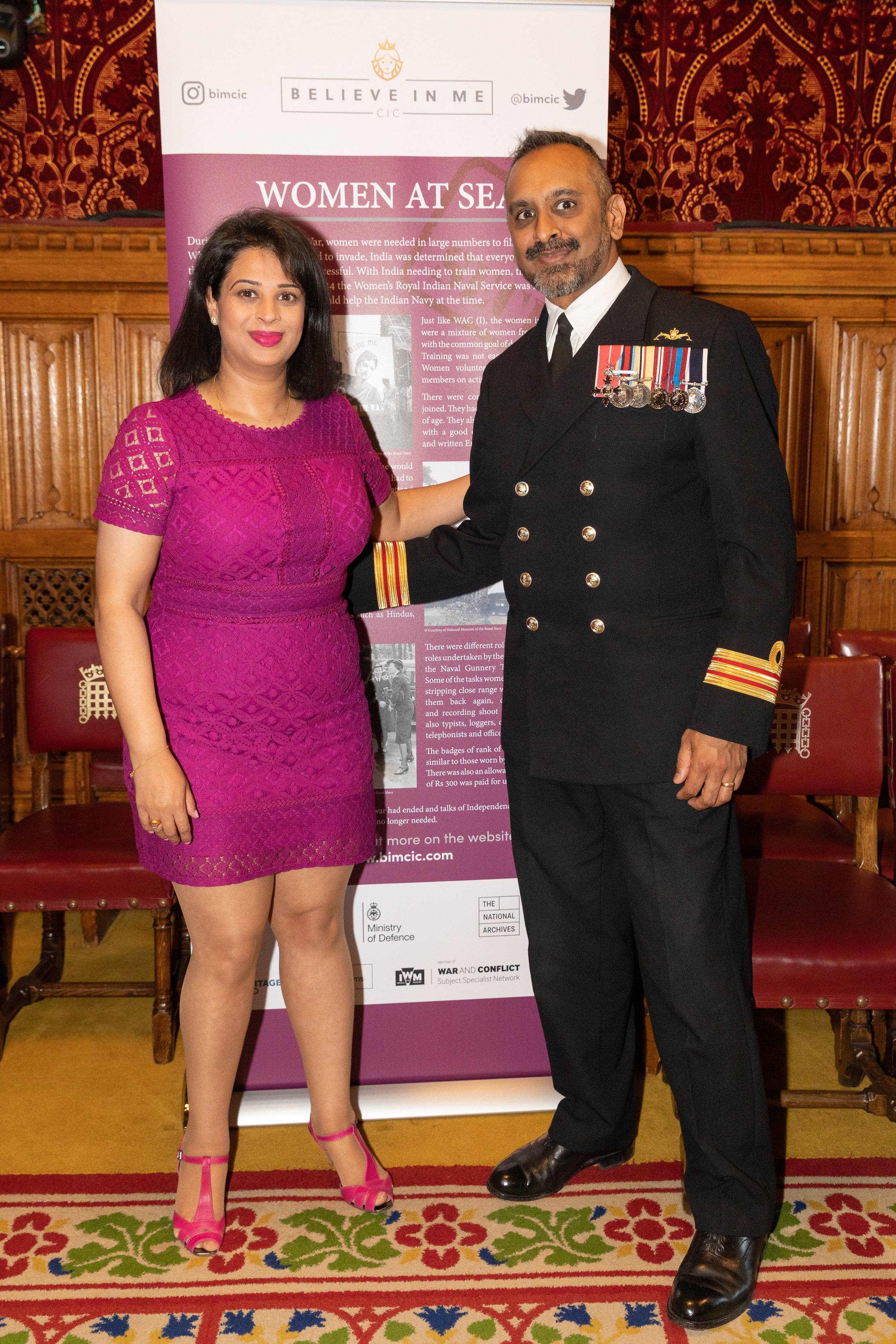Launching the Indian Women in War project at the House of Lords
Lord Singh, Lady Singh and Kiran Sahota
Thinking back to my school days and studying history, I remember we were briefly taught about the world wars. Textbook after textbook, there were figures of how many British soldiers fought and died, and we were images of white European men in trenches. Yes, it was interesting but where were the women? Surely females were part of war? In the reading material, there were few references to women - it was mostly about wives and widows. We also learnt about the famous Florence Nightingale. I can’t recall seeing images of British women in the books, so I stood no chance of finding out about the role of Indian Women in the wars. That brings us to year 2019, the year when I decided to curate the ‘Indian Women and War’ project, with funding from the National Lottery Heritage Fund.
During the research phase, we discovered that women in the war wore saris and were allowed to have non-combative roles outside of nursing. I also uncovered stories of Noor Inayat Khan, a spy for Britain, who had a Muslim father and an American mother. These were the women I wanted to highlight in my project because these histories were more relatable to the communities we live in today. The focus of the project was to learn more about the women who had been involved in Women’s Auxiliary Corps India (WAC I), Women’s Royal Indian Naval Service (WRINS), Women’s Auxiliary Air Force (WAAF) and Special Operations Executives (SOE). There was so little written about these women, so the project was going to be a challenge, as well as being different to the Indian soldiers I have focused on in the past. I working with communities to raise the awareness of these women, realising there was no one expert who knew the full story. In the end I became the expert and pressed ahead with the project.
My research also led me to a darker side of the realities of the war and how women were contributing. I had come across images of working in saris and they didn’t look like the images I had of the women from the units. I learnt these women were exploited and not registered correctly. It was these women who were unable to read and write that did all the manual labour and their history is not spoken about in the military narratives because it does not fit the usual stories: men were the heroes and women waiting for their return. I did think that it might be a little controversial story to include but if I didn’t then I would not be doing the women I was researching much justice. I loved researching and creating this project about these women, but it made me reflect on Indian women such as my nani ji (maternal grandmother) who did not know how to read or write in Punjabi let alone in English. These were some of the struggles she and my nana ji (maternal grandfather) faced when they decided to leave India and come to Britain in the 1960s.
It took 3 years to take my idea of the Indian Women and War project from concept to completion and oh boy, it was hard. That was just the start because I then had to decide where I was going to launch the project and more importantly when. The year started with so many uncertainties and I was concerned about the rise of Covid cases. Will there be another lockdown? Will museums and libraries stay closed? It got to the point where I felt overwhelmed and started to wonder whether all this hard work was worth it if I couldn’t launch the project.
The pressure was taken out of my hands when Lord Singh of Wimbledon called me supporting our work and offering the House of Lords as the venue to launch the project. So of course, I said yes! I would be silly to refuse but had completely overlooked his proposed launch date of 21st of June 2022 was merely a few days after my birthday. Do I dare ask for a different date? Do I even need to celebrate my birthday? “Birthday cake and celebrations can wait”, I decided, “I’ve got work to do”.
So, I rolled up my sleeves and we cracked on with interviewing current South Asian women serving in the Armed Forces, finalising artwork for the exhibition and creating learning resources for the communities to engage with, helping them further their knowledge on women’s history.
Finally, the day came! Of course, I was expecting the day to go swimmingly but with the way my luck was going, June 21st was also the day of national rail and tube strikes! This is exactly what I didn’t need. The volunteers from Birmingham had no way of coming to London because of this. Just to add more disruptions to the day, a last-minute room change in the House of Lords made me question whether the stories and research would ever be shared with the invited guests.
The guest trickled in slowly. Phew! We have an audience! Lord Singh, accompanied by Lady Singh, officially launched my project with an opening speech. By the time it was my turn to speak, I could barely get any words out as I was crying with happy tears. This project was my most ambitious to date and I put my heart and soul I had into this project. When I had calmed myself down, I highlighted the works/efforts of these women from the different units who were from under privileged backgrounds and if they decided to join the war efforts they had to learn to read and write. They had important roles such as map reading, clerks, typists, drivers so knowing the essentials was needed. There were also our fabulous guest speakers such as Urvi Khaitan, Raj Bilkhu-Sohal, Neha Morar and Rajaan Kaur (Royal Navy) who shared their thoughts on being involved in the project and learning these difficult histories.
Along with our volunteers we also had representation from across the Armed Forces today sharing their experiences and stories of how we can be more inclusive in ensuring that the contribution that these women made does not get forgotten. I asked, “we wear the poppies in November to remember the fallen men but what about these women, where and how do they get remembered?”
I would like to give a massive thank you to Lord and Lady Singh of Wimbledon for allowing the project to be platformed, to our fantastic volunteers and experts who stayed on the project through the tough times. This wouldn’t have been a success without the South Asian women across the Armed Forces for them sharing their experiences with me.
